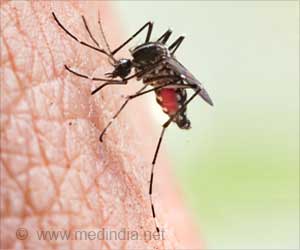Scientists have found an alga in Yellowstone National Park, US, that can detoxify arsenic.
Common toxin, arsenic, can be naturally detoxified by a certain alga found in Yellowstone National Park, US; report scientists.
"The alga - a simple one-celled algae called Cyanidioschyzon - thrives in extremely toxic conditions and chemically modifies arsenic that occurs naturally around hot springs," said Tim McDermott, professor in the Department of Land Resources and Environmental Sciences at Montana State University.Cyanidioschyzon could someday help reclaim arsenic-laden mine waste and aid in everything from space exploration to creating safer foods and herbicides, the scientist added.
Arsenic is the most common toxic substance in the environment, ranking first on the Superfund list of hazardous substances.
According to McDermott, arsenic is very common in the hot, acidic waters of Yellowstone and presents real challenges for microorganisms living in these conditions.
McDermott said that the acid in the soil and water are strong enough that it sometimes eats holes through his jeans when he kneels to collect samples.
McDermott has worked in Yellowstone for more than a decade and travels year-round to the Norris Geyser Basin to study the microbial mats that grow in acidic springs.
Advertisement
By June, they were practically gone.
Advertisement
"These algae are such a dominant member of the microbiology community that they can't escape notice, but for some reason they have not attracted much attention," McDermott said.
The Cyanidioschyzon algae grow all over Yellowstone, but the researchers concentrated on the Norris Geyser Basin.
The alga thrives in water up to 135 degrees Fahrenheit with a very acidic pH factor ranging from 0.5 to 3.5.
"These algae live in areas of Yellowstone that are extremely toxic with respect to arsenic," McDermott said. "You couldn't drink these waters even if you changed their pH," he added.
The scientists cloned genes from the alga, then studied the enzymes to figure out how they transformed arsenic.
They learned that the alga oxidizes, reduces and converts arsenic to several forms that are less toxic than the original.
McDermott said that the scientists conducted basic research that may have implications someday for acid mine drainage and acid rock drainage remediation efforts.
Source-ANI
TAN/L










